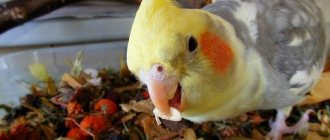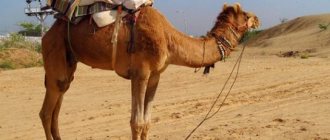Who is not familiar with the appearance of this animal: huge, at first glance, clumsy, sitting for hours in the warm water of some calm African river! Many of us, even those who have never been to Africa, have seen hippos with our own eyes, because they easily take root in captivity and are frequent residents of zoos. Hippopotamuses often open their mouths, and then everyone sees huge fangs and teeth, in comparison with which even the fangs of a lion seem like toys. Do these animals really need such terrible teeth to eat? And in general, what do hippos eat in the wild?
Appearance
The hippopotamus is a fairly recognizable animal, since its appearance cannot be confused with anyone else. A massive, barrel-shaped body, thick but short legs are the main features characteristic of members of this family. Moreover, the length of the legs is often so short that the belly of the mammal barely hangs over the ground, sometimes touching it. The head is huge, in profile it can resemble a rectangle in shape, it is blunt in front and its weight reaches about a quarter of the total mass of the hippopotamus.
All the main sensory organs located on the face are raised up - this structure allows you to breathe, observe the environment and hear sounds, only slightly sticking your head out of the water. The neck is difficult to notice because of its short length; it merges with the body, which is why hippos are not particularly able to turn their heads. Around the eyes there are fleshy eyelids, against which the eyeballs themselves appear very small. If necessary, a hippopotamus can completely close its nostrils, for example, to stay under water longer. This is helped by special muscles, which are developed only in this species. The ears are as small as the eyes, but nevertheless they are mobile and can curl 25-30 degrees. Usually the animal uses them to drive away insects that want to land on its head.
On the front of the muzzle there are long and coarse vibrissae - hairs that resemble those of a cat or dog; almost all mammals have them. The jaw itself is wide, can reach 80 centimeters, but the mouth looks much more terrible, because it can open up to 160 degrees. The paws of a hippopotamus are somewhat reminiscent of hooves, although they have four toes. The tail is not particularly large, but has a special meaning in the life of its owner - it is one of the main means of communication.
What is the difference between a hippopotamus and a hippopotamus?
The Latin name Hippopotamus is borrowed from the ancient Greek language, where the animal was called “river horse”. The ancient Greeks gave this name to a giant beast that lived in fresh water bodies and was capable of making sounds reminiscent of a horse neighing. In Russia, as well as in a number of CIS countries, the hippopotamus is usually called a hippopotamus, and this name has biblical roots. The word behemoth in the book of Job refers to one of the monsters - the embodiment of carnal desires. But, in general, hippopotamus and hippopotamus are the same animal.
Initially, pigs were considered the closest relatives of hippopotamuses, but studies in 2007 proved that hippopotamuses are closely related to whales, determined by a number of common characteristics, such as the ability to give birth and feed young underwater, the absence of sebaceous glands, the presence of a special signaling system for communication and the structure of the reproductive organs.
Photo by: Kabacchi
Structure
In fact, the hippopotamus skeleton has many characteristic features that are not repeated in any other mammal - this is necessary so that the animal does not suffer from its size and weight.
The bones of a hippopotamus are massive and strong, but the vertebrae are considered its strongest parts. The shoulder blades are located almost vertically and form an almost completely even line with the front legs. There are 26 ribs, i.e. 13 pairs
According to the research of the famous German zoologist B. Grzimek, who described the hippopotamus skeleton and the size of its organs, people were able to calculate approximate figures. During the cutting of the corpse of a young mammal, whose weight was about one and a half tons, the following indicators appeared: the weight of the meat separated from all other parts was 520 kg; the bones weighed 280-300 kg, the skin - 48 kilograms, the heart around 8-10, the tongue - 5-6 kg, and the liver 30. According to veterinarians, the intestinal tract reached 60 meters in length, due to which hippos without special problems absorbing huge amounts of fiber. The stomach has three chambers and is considered huge even by artiodactyl standards.
If we talk about absolute size, regardless of the rest of the body, then the brain of this animal is quite large and reaches 900 cubic centimeters. But if you take into account the overall size of the body, then it is incredibly small and makes up only 1/2790 of the part; for comparison, the human brain occupies about 1/40.
How does a hippopotamus breathe underwater?
In fact, the hippopotamus cannot breathe underwater. But, being there, the hippopotamus sees and hears everything, it is convenient for him to inhale air, since the necessary organs are located at the top. The pores on the body secrete pink mucus, which protects their skin from drying out, which is why on land it sometimes seems as if the hippopotamus is “sweating” blood.
A hippopotamus can allow itself to sleep under water; it is able to do this thanks to a special reflex - a reflexive ascent to inhale. He can remain underwater for five minutes (with his entire body completely submerged under water, including his respiratory organs), and then reflexively rises to the surface, takes a deep breath, goes back under water and continues to sleep.
Types of hippos
Common hippopotamus or hippopotamus
This species is huge in size and reaches 6 meters in length and two meters in height. The legs are short, the belly is large and almost touches the ground when moving. The legs, despite their small dimensions, are able to withstand the entire weight of the individual without any problems. There are 4 fingers on them, connected by skin membranes, which contribute to good swimming and rapid movement through swampy areas.
The ears are movable, but very small in size, the nostrils are directed upward, but can be closed at the request of the hippopotamus. The skull has a rectangular shape, the neck is almost completely absent and because of this the animal is not particularly mobile. Males may often develop small growths or swellings on their nostrils that are unique to that sex. The mouth can open 150-160 degrees, and the jaw can reach a meter in width.
Hippopotamuses have well-developed teeth and fangs, which are located on the lower jaw. They are mostly crescent-shaped in shape, weigh up to five kilograms and can be sixty centimeters in length. If, in the event of some kind of injury, a mammal loses the upper pair of fangs, then the lower one increases in size up to a meter to compensate for the deficiency and fill the void in the jaw. But at the same time, the hippo's lip is pierced, and he loses the opportunity to eat normally. To avoid such embarrassments, experts carefully monitor the giants.
Hippopotamus
The tooth enamel of this species is yellow in color, and the number of teeth is 36. These are 6 molars, 4 incisors, 2 canines and another 6 premolars on each jaw.
Pygmy hippopotamus or hippopotamus
This animal is often popularly referred to as “nigbwe”. As the name suggests, the key difference from the ordinary species is the size, which is significantly smaller than that of its fellow. At the moment, animals belonging to this subspecies are on the verge of extinction. This happens because of poachers, because killing an ordinary giant mammal will be problematic, and they are guarded so tightly that it is hardly possible to get close to them. Dwarfs are defenseless, because in size and other parameters they are inferior to their counterparts.
The legs, compared to the body, are much longer than those of ordinary members of the family. The neck is also present, due to which dwarfs have greater mobility and visibility. There is only one pair of incisors in the mouth, although giants have two. The nostrils and eyes do not stand out and almost completely merge with the head. The back leans forward and creates a slight hump.
Pygmy hippopotamus
The dimensions are modest; dwarf hippos rarely reach two meters in length, and one in height. The liquid, thanks to which the mammal protects itself from the heat, has a pinkish tint, while in most other individuals it is red.
Description of hippos
The word hippopotamus comes from the ancient Greek name for this animal, which means “river horse.” The name of these artiodactyls is due to the fact that they make loud sounds reminiscent of a horse neighing. Many people, and even experts, call these animals hippopotamuses, although a name like hippopotamus would also be correct.
Interesting to know! Not so long ago, it was believed that the closest relatives of hippopotamuses were pigs, but ten years ago, studies were carried out, as a result of which it was established that hippos are the closest relatives of whales.
This relationship is due to the peculiarity of hippopotamuses associated with the ability to reproduce their offspring under water. In addition, hippos do not have sebaceous glands, and they also have the ability to communicate between their relatives using special signals. The reproductive organs have a unique structure.
Appearance
These animals have a unique appearance, so it is almost impossible to confuse them with other animals. They simply have a huge barrel-shaped body, while they are only slightly inferior to elephants. These unique artiodactyls grow throughout their lives. It should be noted that after 10 years of life, females and males have almost the same weight, although this period does not last long, since males begin to actively gain weight and after a few years become more massive than females.
The huge body is set on relatively short limbs, so when walking the stomach can reach the surface of the ground. Each limb ends with 4 fingers, while the hoof has a unique shape. There are membranes between each toe, which allows the animal to feel great in the water. The tail of a hippopotamus, about half a meter long, is thicker at its base and almost flat at the end, while it is round and gradually tapering. The shape of the tail allows animals to scatter their feces over a considerable distance. Thus, hippopotamuses indicate their possessions.
Interesting to know! The animal’s head is simply huge, since it takes up up to 25 percent of the total body weight, which is about one ton. If you look at the profile. The head is almost rectangular, but blunt at the front. The ears are relatively small, but have unique mobility. The nostrils are wide, and the eyes are relatively small and seem to be buried in the fleshy eyelids of the animal. The ears, nostrils and eyes of a hippopotamus are set high and are located almost in one line.
Thanks to this arrangement of these organs, a hippopotamus can submerge almost completely in water, but its eyes, ears and nostrils remain below the surface of the water. Male hippos can be distinguished from females by special knob-like swellings, which are located next to the nostrils, on one side and on the other. Such swellings are nothing more than the base of huge fangs. Already adult females, after 10 years of life, are noticeably smaller than males.
We can say that the hippopotamus's muzzle is wide and dotted with short and rather hard whiskers. When a hippopotamus opens its mouth, it forms an angle of about 150 degrees, while the width of the open mouth is on average 65 centimeters. Common hippopotamuses have 36 teeth covered with yellow enamel.
Each jaw is armed with six molars, six premolars, as well as a pair of canines and four incisors. Males have especially developed and sharp fangs. Moreover, they have a sickle-shaped shape and a longitudinal groove, characteristic of the lower jaw. Gradually the fangs bend backwards. In some individuals, the length of the fang is about 60 cm, with a weight of about 3 kilograms.
Another peculiarity of such animals is that they have extremely thick skin, although closer to the tail it is not as thick as on the rest of the body. The back of the animal has a gray or grayish-brown tint, and the belly, within the ears and eyes, has a pinkish tint. The animal is completely devoid of fur, although a very small amount of hair grows on the tail and ears.
Important point! The breathing of hippos is also unique, since they take no more than 5 breaths per minute. Moreover, when they dive, they may not breathe underwater for about 10 minutes.
Hairs also grow on the sides and belly, but there are very few of them. Hippos do not have sebaceous and sweat glands, but they do have skin glands, which are characteristic exclusively of such mammals. When it is too hot, the animal’s skin becomes covered with a special type of reddish mucus, which provides the hippopotamus with protection from various parasites, including blood-sucking ones.
Behavior and lifestyle
Hippos prefer to lead a herd lifestyle, so their groups can consist of several dozen individuals. These animals stay in the water all day, but when darkness falls they go in search of something edible. The task of the females is to maintain order in the herd, but the males are responsible for the safety of the entire herd.
Males are quite aggressive by nature and already upon reaching the age of seven they show their aggressive disposition to the rest of the family, especially males. To do this, they spray them with urine and feces, and also yawn, opening their mouths wide and making a crazy roar.
At first glance, these animals are slow and clumsy, but they are capable of reaching speeds of up to 30 km/h, so a person is unlikely to be able to escape from them. The main sounds they make are a characteristic grunt or neigh, like a horse neighing. Weaker hippos, as a sign of submission to stronger individuals, lower their heads low. Adult males also jealously guard their territory. They mark their trails regularly and monitor the area daily.
How long do hippos live?
According to scientists, the lifespan of these wild monsters is no more than 4 decades. At the same time, being in captivity, they are able to reach an age of 50 years, or even more.
As a rule, their life expectancy directly depends on the rate of wear of their molars. When a hippopotamus no longer has teeth, it does not live long after that.
Interesting facts about Hippos.
Lifestyle and behavior
The hippopotamus is a herd animal, rarely separating from groups of its fellows. Usually there are not many individuals in the herd, about thirty, but during migration the number of heads can increase to two hundred. A female can also become a leader, since the key factor is not gender, but strength, but females almost never have enough strength to defeat a male. That is why it is mainly male representatives who are in charge.
To become the head of the herd, you need to defend your honor and strength in battle, not only with your peers, but also with young animals. Hippopotamuses, unlike other mammals, fight with great injuries. The dominant male does not let go of his opponent even after victory, chasing him for many kilometers. Because of this, most of the competition began to take place near water, since thanks to the depth, the weaker individual would be able to escape from the alpha. But victory in a fight does not mean that the outcome of the battle is already clear, because often the dominant dies due to injuries received. Because of this, battles for the title of leader can take place more than once.
Unlike ordinary hippos, dwarfs settle separately from their relatives, trying not to gather in a herd. It happens that they are looking for a place to live in pairs, but due to weakness they do not protect their possessions, preferring to run away.
Hippos try to spend all their time in the water, in their territory, in which they dominate and can withstand almost any threat. They can even sink to the bottom of a reservoir, regardless of its depth, and stay there for 10-15 minutes. Hippos are herbivorous mammals, but their lifestyle, habits and aggression are in many ways similar to predators. For example, these huge artiodactyls look for their food preferably at night, and try to rest during the day. This is due to their strong sensitivity to sunlight, due to which animals can even get burned. The heat of the day does not allow them to stay on land for more than 30 minutes, which is why they have to plunge into the water every half hour and cool down.
Hippo lifestyle
Common hippos are social animals and live in small herds of 20-30 individuals, although sometimes colonies reach 200 animals. At the head of the herd is a dominant male, who has to constantly prove his right to the harem. In the fight for the female, fierce fights occur between hippopotamuses, when opponents tear each other with their fangs, which often ends in the death of the weaker opponent. Therefore, the skin of a hippopotamus is completely covered with scars of varying degrees of freshness.
Photo by: Nilsrinaldi
If an ordinary hippopotamus is a herd animal that protects its territory, then the pygmy hippopotamus, like the tapir, stays apart, is non-aggressive towards its fellow tribesmen and does not seek to protect personal possessions.
Although sometimes you can spot a pair of hippos living together.
Photo by: Vogelfreund
Water evaporates from a hippopotamus’ body very quickly, so hippopotamuses spend most of their lives in the water, coming ashore only at night to search for food. Pygmy hippos spend more time on the shore than ordinary hippos, but daily and regular baths are also important for their skin to prevent the skin from drying out and cracking.
Mostly, hippos live near fresh water, although occasionally these animals have been spotted in the sea.
Where do they live?
At the moment, the main habitat of hippopotamuses is extremely limited, although just a couple of million years ago this animal could be found on almost every continent of the globe. Extinction is associated not only with colonizers and climate deterioration, but also with the onset of the Pleistocene ice age. Hippos cannot tolerate the heat of the sun, but their bodies cannot withstand the cold either. Moreover, for example, from some parts of western Africa the animal disappeared only in the ancient period, and from the territory of the Nile they disappeared only at the beginning or end of the nineteenth century.
Now these giants live south of the Sahara, in Africa. It can also be found near Mozambique and Malawi, in Uganda, Tanzania and Kenya. In these places, the number of individuals varies from eighty to hundreds of thousands. At present, destruction threatens not only the animals themselves, but also the places in which they live. This is due to rapid industrialization and the continued complete takeover of Africa. It is possible that hippos will soon become an endangered species.
The dwarf species lives in the same place as the ordinary one.
Origin of the species and description
Photo: Behemoth
Hippopotamuses are representatives of chordates, a class of mammals, an order of artiodactyls, a suborder of non-ruminant pigs, and a family of hippopotamuses.
Zoologists say that the evolution of these animals is not fully understood. Scientists claim that representatives of the hippopotamus family, which were similar to modern hippos, appeared on earth a little more than five tens of millions of years ago. The ancient ancestors of animals were ungulates, which were called condylartrae. They led a solitary life and were loners by nature.
Video: Hippopotamus
Moist forest areas were predominantly chosen as habitat. Outwardly, they were most similar to modern pygmy hippopotamuses. The most ancient remains of this animal were discovered on the African continent and dated to the Miocene period. The ancestors of the animal, which can be safely attributed to the genus of hippopotamuses, and had the greatest similarity with modern species, appeared approximately two and a half million years ago. During the Pliocene and Pleistocene they became quite widespread.
Scientists have proven that during the Pleistocene the number of animals was enormous and significantly exceeded the number of animals existing in natural conditions today. According to the remains of animals discovered in Kenya, scientists have found that their number during the Pleistocene period was 15% of all vertebrates of that time, as well as 28% of all mammals.
Hippos lived not only within the African continent, but also beyond its borders. They were completely eliminated from Europe as a result of the Pleistocene Ice Age. At that time there were four species of animals, today only one remains. The pygmy hippopotamus was separated from the general evolutionary trunk approximately 5 million years ago.
What do they eat?
Hippos are usually considered herbivores, but according to some reports, certain individuals are capable of hunting flesh and are carnivores. Thirst for blood appears due to too much deficiency of salts and minerals. As prey, giants attack cows and antelopes, and also eat carrion if the situation requires it.
The usual diet of hippopotamuses consists of thirty species of terrestrial and semi-aquatic plants, but they do not like to eat plants that grow at depth. Using their massive jaws, these mammals bite their food at the very root, tearing it clean out. They consume more than fifty kilograms of biomass per day. The long intestinal tract, which reaches 60 meters in size, helps process this amount of food. Thanks to this, the giant digests food twice as fast. They search for food at night, so local residents are afraid to approach water bodies late in the day.
The dwarf species is not able to hunt or consume huge plants, so it has to be content with fructose, vegetation and grass.
What does hippopotamus mean?
Hippopotamus is a negatively colored spiritual creature in Christian mythology, a demon of carnal desires, especially gluttony.
Interesting materials:
How many children did Vysotsky have? How much was spent on the 2014 Olympics? How much Bju is in boiled pasta? How many hours does it take to travel from Penza to Moscow by car? How many hours of physical education are there at school according to the Federal State Standards? How many hours does it take to fly from Kazan to Cuba? How many hours does it take to fly to Goa from Moscow? How many hours does it take to fly from Kharkov to Egypt? How many hours does a pilot need to fly? How many hours does it take to complete Call of Duty Cold War?
Reproduction
Despite the fact that these animals have existed for several million years, their reproduction is still not well understood when compared to other large herbivores, such as giraffes and elephants. Puberty ends and sexual maturity begins when males are between six and fourteen years old and females are between 7 and 15 years old. On average, the age of puberty usually reaches ten years. Hippopotamuses, unlike other inhabitants of the African fauna, mate not once, but twice a year - in August and February. More than half of babies are born in rainy weather. It is also noteworthy that a female can become pregnant again and give birth only a year and a half after carrying the previous child.
During fierce battles, the strongest male expels all representatives of his sex from the herd, leaving only females. Ultimately, only one individual mates and fertilizes all the females in the area. But there are often cases when the dominant’s “strength” is not enough and he, with all generosity, allows other males to take part in mating. The breeding process itself can take place in shallow water or a pond, but hippos do not like to mate on land.
The duration of pregnancy is about eight months, but the exact number of days is unknown, since data varies everywhere. To give birth to offspring, the female moves away from the herd. Most sources and scientists believe that births occur exclusively in water, but according to the observations of others, there are cases when a hippopotamus is born on land. In addition, if there is no access to a reservoir, the female builds a small nest, which consists of bushes and crumpled grass. This approach ensures the baby’s safety, because with the help of plants he can be hidden from the sun’s rays and wait until night falls.
When a common hippopotamus calf is born, it weighs from twenty to fifty kilograms, but mostly about 45 kg. The length of its body is small, only a meter, and its height is even less - 50-60 centimeters at the shoulders. If the birth took place in a reservoir, then the mother pushes her cub to the surface and pulls it into shallow water, otherwise it will suffocate. Within ten minutes the baby comes to his senses, and after that he stands firmly on his feet and can even move independently.
After the birth has passed, the female does not eat food and remains near the child all her time, without abandoning him for a second. She is waiting until her child can get stronger, gain strength and crawl ashore on his own. This procedure takes up to two weeks, since it is after this period that the cub can finally distinguish between land and water, and can also swim.
Lactation, or feeding with milk, can last about twenty months. All this time, the young hippopotamus consumes only mother's milk in its diet. And not only on land, but also in water. This feature is observed in only a few species of mammals and is therefore considered very rare. The ability to suck milk while at depth is present only in sirenians and cetaceans. During this process, the baby presses his ears to his head and closes his nostrils with the help of special muscles that are better developed than others.
Since pygmy hippos are only superficially similar to their larger counterparts, but are radically different in their lifestyle, their behavior during reproduction is different. Unfortunately, at the moment, mating of this species has not been particularly studied, since all individuals tend to stay separate from others, but some data have become known recently. In captivity, such as in a zoo or small commercial reserve, pygmy hippos form stable, monogamous pairs that are chosen by four years of their life, if not earlier. They do not have a specific time of year for mating, and pregnancy lasts about two hundred days, which is a whole month less than that of their relatives. Childbirth occurs on land and lactation occurs only 7-8 months of life, although in the common species it is twice as long.
If we compare how long pregnancy and puberty last for other animals inhabiting the African continent, then the common hippopotamus can without a doubt be called a leader. Puberty in these mammals occurs much faster than, for example, in rhinoceroses. This is also facilitated by childbirth, which takes place twice a year, unlike elephants. In addition, if there is no threat to the life of a female hippopotamus, then she begins to recover faster, reducing the time interval between the next offspring.
Interesting facts about hippos
Good afternoon, dear readers of the site Interessno.ru. When we think of hippos, we imagine large mammals lazily bobbing in the water, yawning, etc. What else do we imagine? We can assume - nothing. The thing is that despite the popularity of hippos, people know practically nothing about them. And today we will try to correct this situation. We have prepared the most amazing and interesting facts about hippos especially for you.
We hope that the information from the article will be relevant not only for schoolchildren or children, but also for an adult audience.
Population
At the moment, ordinary hippopotamuses are not experiencing any special problems with the population. Their massive size makes it difficult for even poachers to hunt without difficulty. You also need to take into account that even wild territories are, one way or another, under protection, which means it simply won’t be possible to kill an individual of such a gigantic size.
The situation is much worse for pygmy hippos - their numbers are limited and may soon decline to the stage at which they will be classified as an endangered species. This occurs due to the physical weakness of small individuals, which cannot boast of either size or strength. The only thing they have to do in case of an attack is to run, but the bullet will still be faster and after just a couple of shots the animal will fall lifeless. People are trying to compensate for the deficiency by taking under protection more and more areas where dwarfs live, but this still does not bring visible results. If a poacher can be prevented from taking his prey, then he will still be able to kill it, and then hide when he notices something is wrong.
Judging by historical information, unlike bison or elephants, hippos were not subject to mass extermination and the hunt for them was not so fierce.
Hippopotamus food
This species is believed to be a herbivore. However, they act as predators when there is a lack of nutrients.
Hippos are not known to eat algae. During the day they eat 40-70 kg of plants.
The 60-meter intestine promotes good absorption of what is eaten. Hippos prefer to feed at night.
Natural enemies
Since this animal has the same mass as an elephant, it is not suitable as prey for other predators. Currently, only lions and Nile crocodiles pose a threat to hippopotamuses. But they can only attack and kill young animals or females, because the size of an adult male also determines his strength. Long fangs, which, although designed for tearing vegetation, can tear apart even a large and strong lion without any problems. That is why not a single predator risks attacking adults alone.
The Nile crocodile is the enemy of the hippopotamus
In the wild, only a pack of lions working together can kill an ordinary hippopotamus. And then, if there is a body of water nearby, the giant will easily hide from his ill-wishers. Scientific reports describe several cases when three or four lions decided to surround and attack a hippopotamus, and the hippopotamus, since its territory was nearby - water, rushed there. They followed him, which they almost immediately regretted: the seasoned large mammal, without any problems, began to drown and ram his enemies, so it was not he who had to run, but they, in order to stay alive. From similar cases, a situation is also known when a pair of lions decided to feast on a baby hippopotamus, but a female came to his aid, as a result of which one predator was crushed and the other was drowned in liquid silt.
Crocodiles, by the way, do not always attack their neighbors in their habitat; often, on the contrary, they coexist peacefully with each other. It often happens that the female leaves young individuals in the care of crocodiles, and they protect them from hyenas or lions. Crocodiles can also ride on the backs of adult animals, creating duos of shallow water monsters. However, due to some defect in the brain of one of the mammals, crocodiles or hippos act aggressively towards each other, attacking and eating each other.
There have been reports of alligators attacking adult males and even successfully defeating them, but this is rather an exception, since those individuals were sick or injured. According to people's observations, when the number of crocodiles decreases due to their actions, the number of hippopotamuses in those areas increases sharply. This fact clearly demonstrates that one way or another, the population of one species directly depends on the population of another.
If even a strong lion does not risk attacking an adult, then with cubs things are different - they are eaten without problems not only by kings of animals, but also by leopards and hyenas. According to currently known data, in the first year of life, young animals die due to attacks by natural enemies in 30-50% of cases. In addition, during migration, adults can simply crush babies.
Natural enemies of hippos
Photo: Hippopotamus in Africa
Due to their enormous size, strength and power, hippos have practically no enemies in natural conditions. Predators can only pose a danger to young animals, as well as to sick or weakened animals. The danger for hippopotamuses is crocodiles, which in rare cases can attack representatives of the hippopotamus family, lions, hyenas, and leopards. According to statistics, from 15 to 30% of young individuals under one year of age die due to the fault of these predators. Often, in herd conditions, the cubs can be trampled by the adults.
The biggest source of danger and the reason for the sharp decline in the number of hippos is humans and their activities. Animals were exterminated by humans in large numbers for their meat. In many African countries, dishes made from hippopotamus meat are considered a delicacy. It is similar to pork meat, and tastes like beef. The skin and bones of the animal are of great value. Special devices for polishing and cutting precious stones are made from the skin, and the bones are a valuable trophy and are valued even more than ivory.
Interesting Facts
Hippos are, without a doubt, peculiar and unique animals. No matter how people try to study and observe, there are still many holes and missing elements in the known information. But nevertheless, humanity was able to come to some conclusions:
- The growth of hippos does not stop when they reach a certain age, but on the contrary - over time they only increase in size.
- At the end of their tail they have small, almost invisible bristles. With their help, marking the territory occurs much faster. By the way, they use their own feces as “material” for marking. Therefore, when traveling near the freshwater rivers of Africa, tourists often see many stinking mountains on the banks.
- In fact, there are many facts proving that the herbivory of hippos is a myth that arose due to the observation of only dwarf individuals. Representatives of the common species are considered dangerous predators that can even eat a person if he comes too close and steps into their territory.
- According to annual statistics, human mortality from hippopotamus jaws is even higher than from attacks by lions and crocodiles.
- On the black market, the cost of hippopotamus tusks is even higher than elephant tusks due to their strength.
Hippopotamus habitats
Hippos prefer fresh water bodies located in Africa. Wild hippos live for about 40 years, while those living in captivity live up to 50 years.











